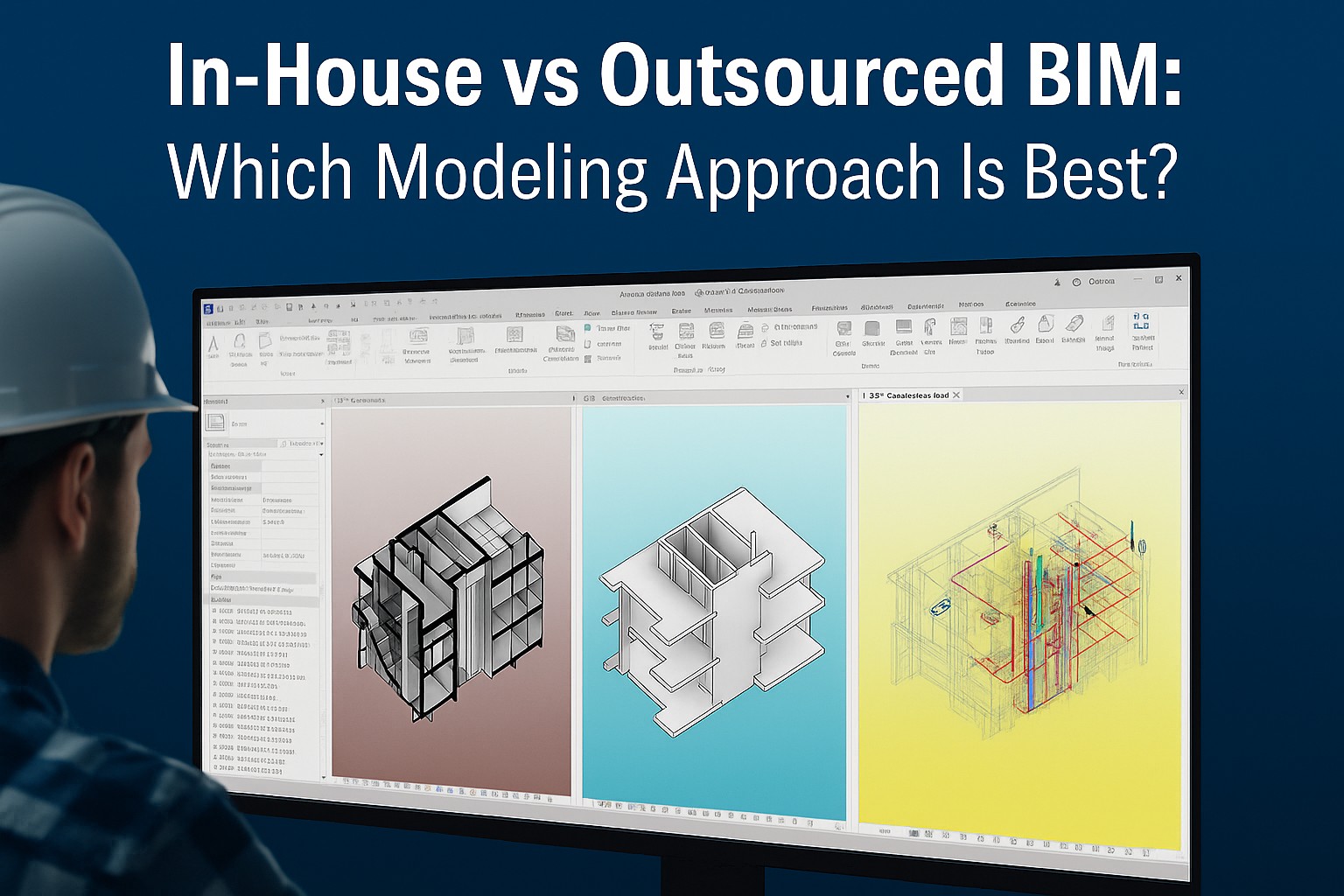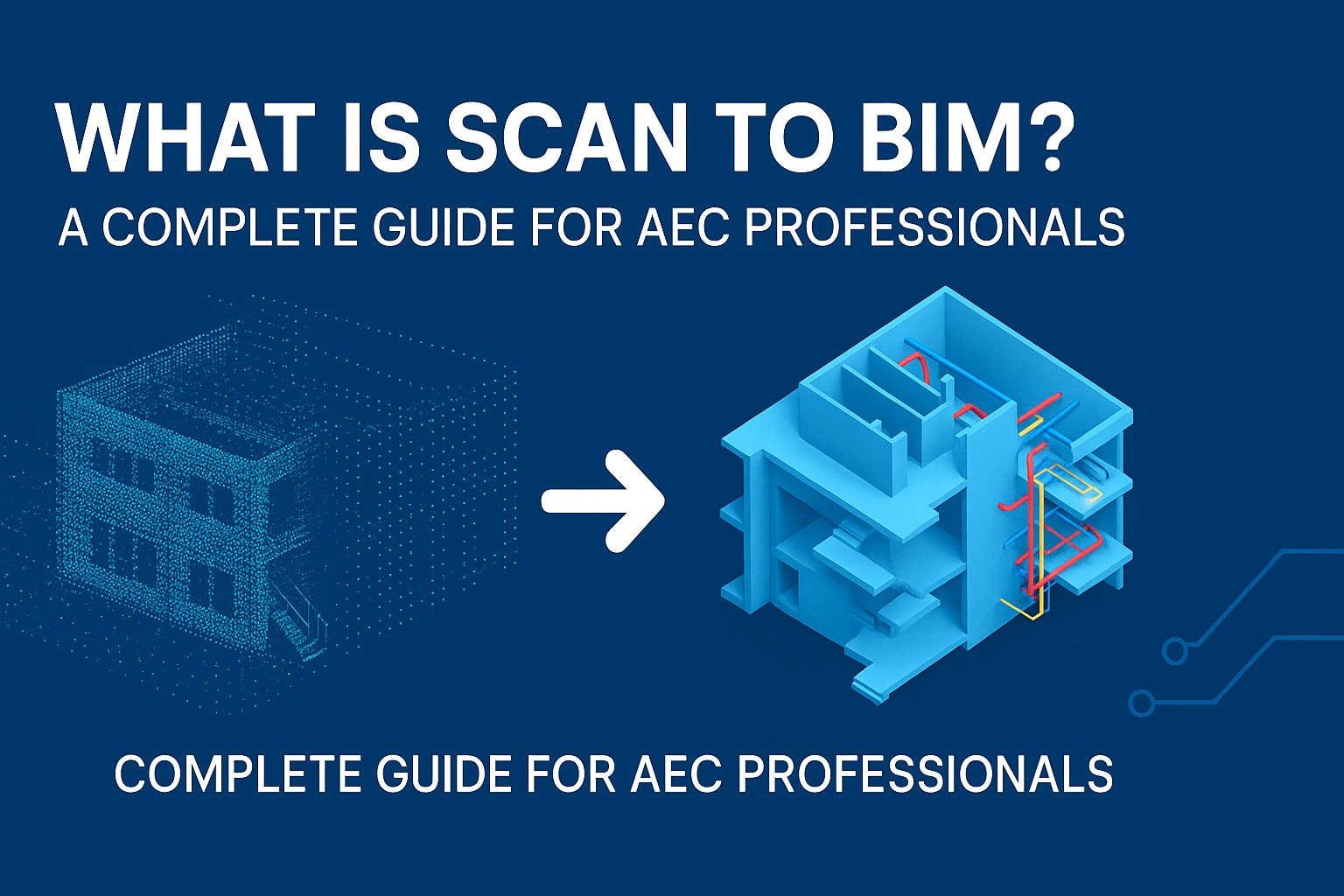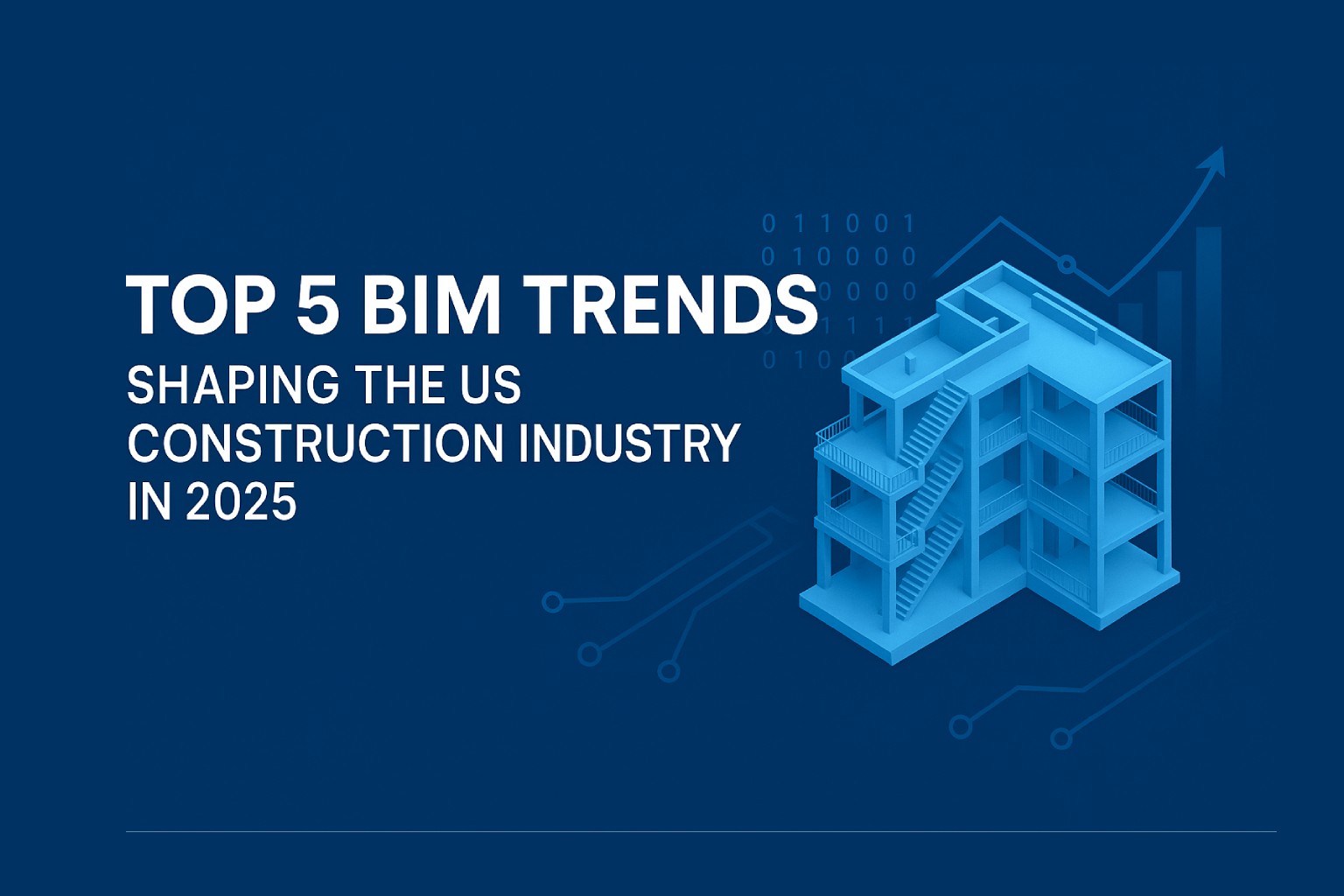Top 5 BIM Trends Shaping the US Construction Industry in 2025
The US construction industry is undergoing a profound transformation, driven by digital innovation and the increasing adoption of Building Information Modeling (BIM). As we enter 2025, BIM is no longer just a design tool—it has evolved into a strategic asset that empowers stakeholders to collaborate more effectively, build more sustainably, and deliver projects with greater efficiency and accuracy. In this blog, we explore the top five BIM trends shaping the US construction landscape this year, supported by the latest facts, figures, and actionable insights.
1. AI-Driven BIM Automation
Artificial Intelligence (AI) is rapidly changing the way BIM is used in the construction sector. In 2025, AI-powered BIM solutions are automating repetitive and time-consuming tasks such as clash detection, quantity takeoffs, and model validation. These tools leverage machine learning algorithms to analyze vast amounts of project data, identify patterns, and suggest design improvements with minimal human intervention.
For instance, AI-driven BIM platforms can now predict potential project risks by analyzing historical data from similar projects, enabling teams to proactively address issues before they escalate. This not only reduces costly errors but also accelerates project timelines. According to recent industry reports, firms that have integrated AI into their BIM workflows have seen productivity gains of up to 25% and a significant reduction in rework.
2. Digital Twins and Real-Time Data Integration
Digital twin technology—virtual replicas of physical assets—has moved from buzzword to business-critical tool in the US construction industry. In 2025, digital twins are being used extensively for real-time monitoring, predictive maintenance, and performance simulation throughout the building lifecycle.
By integrating IoT sensors and BIM models, digital twins provide a live, data-rich environment where facility managers and owners can monitor building systems, track energy usage, and simulate the impact of design changes before implementation. This proactive approach to asset management is reducing downtime and operational costs for property owners across the country.
Major infrastructure projects in cities like New York, Los Angeles, and Chicago are now leveraging digital twins to optimize facility performance and extend asset life. The ability to make data-driven decisions in real time is proving invaluable, especially as buildings become more complex and client expectations rise.
3. Cloud-Based BIM Collaboration
The shift to cloud-based BIM platforms has fundamentally changed how US construction teams collaborate. In 2025, over 80% of large US construction firms are using cloud BIM solutions, making it the dominant deployment model for project delivery and coordination.
Cloud BIM platforms allow architects, engineers, contractors, and owners to access and update project models in real time, regardless of their physical location. This seamless collaboration is particularly crucial for large-scale projects involving multiple stakeholders and geographically dispersed teams. The result is faster decision-making, fewer coordination errors, and improved project transparency.
Cloud-based BIM also supports remote work and flexible project management, which have become standard in the post-pandemic era. Leading solutions like Autodesk BIM 360 and Trimble Connect are widely adopted for their scalability, security, and ability to integrate with other construction technologies.
4. BIM for Sustainability and Carbon Accounting
Sustainability is now a top priority for US construction firms, and BIM is playing a pivotal role in achieving environmental goals. In 2025, BIM is being used to simulate building performance, optimize energy consumption, and support green certifications such as LEED and WELL.
One of the most significant trends is the use of BIM for carbon accounting. By modeling and analyzing the embodied carbon of materials and construction processes, project teams can make informed decisions to minimize environmental impact. This is especially important as more states introduce regulations and incentives for low-carbon construction.
BIM-enabled sustainability workflows are helping firms achieve net-zero targets and demonstrate compliance with evolving environmental standards. As a result, sustainable BIM practices are not only good for the planet—they’re also becoming a competitive advantage in winning new business.
5. Interoperability and OpenBIM Standards
As BIM adoption grows, so does the need for interoperability—the ability to share data seamlessly across different software platforms and project phases. In 2025, the push for OpenBIM standards is reshaping how US construction teams collaborate and exchange information.
OpenBIM ensures that BIM models are accessible, consistent, and usable throughout the project lifecycle, regardless of the tools or vendors involved. This reduces costly data silos, rework, and miscommunication between stakeholders. Organizations like buildingSMART are leading the charge in developing and promoting OpenBIM protocols, which are now widely recognized and implemented in the US market.
The adoption of OpenBIM is particularly important for public sector projects, where transparency, accountability, and long-term asset management are critical. By embracing interoperability, firms can future-proof their workflows and deliver higher value to clients.
US Market Facts & Figures
- The US BIM market is valued at approximately $2.22 billion and is expected to grow rapidly as digital construction becomes the industry standard.
- 80–90% of major US contractors use BIM on some projects, with adoption nearly universal in commercial construction.
- Government mandates and local regulations in states like California, New York, and Texas are accelerating BIM adoption, especially for public infrastructure projects.
- The global BIM market is projected to grow from $9.93 billion in 2025 to $19.04 billion by 2030 at a CAGR of 13.9%.
Conclusion
The US construction industry’s embrace of BIM is unlocking new levels of efficiency, sustainability, and collaboration. As we move through 2025, trends like AI-driven automation, digital twins, cloud collaboration, sustainability, and OpenBIM standards are setting the pace for the future. Firms that invest in these innovations will be best positioned to meet client demands, comply with regulations, and thrive in an increasingly competitive market.
Stay ahead by adopting these BIM trends and transforming your project delivery for the digital





